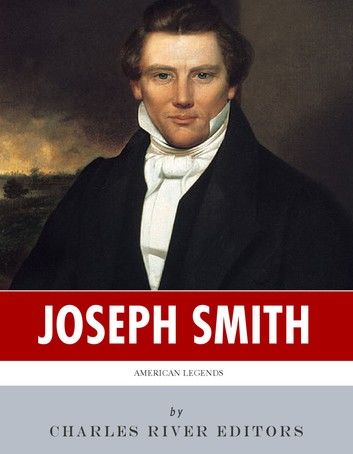| FindBook |
有 1 項符合
The Leaders of the Mormons: The Lives and Legacies of Joseph Smith and Brigham Young的圖書 |
 |
The Leaders of the Mormons: The Lives and Legacies of Joseph Smith and Brigham Young 作者:Charles River Editors 出版社:Charles River Editors 出版日期:2013-03-16 語言:英文 |
| 圖書館借閱 |
| 國家圖書館 | 全國圖書書目資訊網 | 國立公共資訊圖書館 | 電子書服務平台 | MetaCat 跨館整合查詢 |
| 臺北市立圖書館 | 新北市立圖書館 | 基隆市公共圖書館 | 桃園市立圖書館 | 新竹縣公共圖書館 |
| 苗栗縣立圖書館 | 臺中市立圖書館 | 彰化縣公共圖書館 | 南投縣文化局 | 雲林縣公共圖書館 |
| 嘉義縣圖書館 | 臺南市立圖書館 | 高雄市立圖書館 | 屏東縣公共圖書館 | 宜蘭縣公共圖書館 |
| 花蓮縣文化局 | 臺東縣文化處 |
|
|
圖書介紹 - 資料來源:樂天KOBO 評分:
圖書名稱:The Leaders of the Mormons: The Lives and Legacies of Joseph Smith and Brigham Young
*Includes pictures of Smith, Young and important people and places in their lives.*Discusses their leadership of the Mormons, their religious views, and their controversial battles with state militias and federal authorities.*Includes a Bibliography of each man for further reading.*Includes a Table of Contents. “Our missionaries are going forth to different nations, and in Germany, Palestine, New Holland, the East Indies, and other places, the standard of truth has been erected: no unhallowed hand can stop the work from progressing, persecutions may rage, mobs may combine, armies may assemble, calumny may defame, but the truth of God will go forth boldly, nobly, and independent till it has penetrated every continent, visited every clime, swept every country, and sounded in every ear, till the purposes of God shall be accomplished and the great Jehovah shall say the work is done.” Joseph Smith"I know just as well what to teach this people and just what to say to them and what to do in order to bring them into the celestial kingdom...I have never yet preached a sermon and sent it out to the children of men, that they may not call Scripture. Let me have the privilege of correcting a sermon, and it is as good Scripture as they deserve. The people have the oracles of God continually." Brigham YoungAmong all the various figures in 19th century America who left controversial legacies, it is hard to find one as influential as Joseph Smith (1805-1844), the founder of the The Church of Jesus Christ of Latter Day Saints, Mormonism, and the Latter Day Saint movement. Revered as a prophet on the level of Moses by some, reviled as a perpetrator of large-scale fraud by others, what everyone can agree on is that Joseph Smith founded a religious movement that played a crucial role in the settlement of the West, especially in Utah. Smiths dream of Zion would lead the way for the trials and the tribulations of the Mormons for the rest of the 19th century, including countless conflicts with local authorities and the U.S. government. Smith himself would be a casualty of the clashing, murdered by a mob in 1844 after being imprisoned in Carthage, Illinois near the settlement of Nauvoo, which Smith had painstakingly tried to create as a commune for his people.After Smiths death, it was Young who led Mormon pioneers westward in a journey that the Latter Day Saints often likened to the Exodus, and Young became popular as “American Moses”. At the same time, Young and his group were involved in a seemingly never ending list of controversies, both of their own making and the misconceptions of so many Americans who were unfamiliar with the religion. What can be said about Young is his plain-spoken demeanor of appearance and personality made his efforts to connect with the members of his church all the more authentic. He looked and acted like most Mormons, and despite the dressed up appearance he gave to dignitaries who met him, his common touch worked because he genuinely cared about his fellow Saints. No matter the controversies that raged in the territory of Utah about Mormon lieutenants harassing federal officials, or the rumors of Danite murders of non-Mormons and apostates, the people of Zion viewed him as their representative and the defender of their way of life. The Leaders of the Mormons profiles the extraordinary lives of both men, chronicling Smith's founding of the Church and Young's leadership of it in the wake of his death. Along the way it discusses the Book of Mormon and the religious beliefs espoused by both men. With pictures, bibliographies, and a Table of Contents, you will learn about Joseph Smith and Brigham Young like never before.
|











